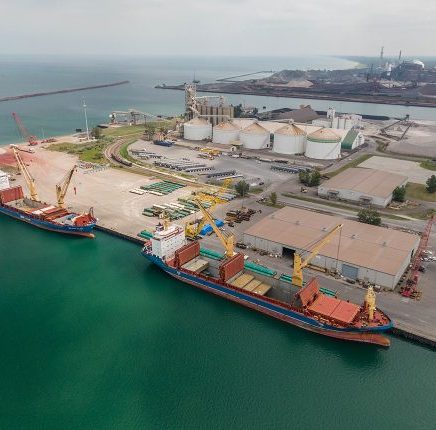Done! Congress Gives Final Approval to $1.2 Trillion Infrastructure Bill
The legislation had been bogged down in the House for almost three months due to infighting between the liberal and moderate wings of the Democratic party. Key to the passage was the delinking of the IIJA from a separate, $1.9 trillion social spending bill. Liberals had threatened to block the IIJA until moderates made concessions on the social spending measure. In the end, moderates prevailed as House Speaker Nancy Pelosi rounded up enough votes to allow the IIJA to move forward alone – leaving the fate of the social spending measure uncertain.
The legislation provides a historic infusion of federal funds for transportation infrastructure including highways, bridges, seaports, waterways, transit systems, airports, passenger rail and freight rail. Beyond transportation infrastructure, the bill invests in drinking and wastewater, broadband and energy infrastructure.
While some funds are provided over an eight-year period, most transportation funds are provided over the next five years (FY2022-26). Its helpful to think of the funding as a layer cake with two layers. Depending on the program, the legislation either provides or assumes that future Congresses will provide a base layer of funding at current levels (FY2021). Above and beyond the base layer, the bill then adds a layer of additional funds for each year.
The legislation also creates and funds a number of new transportation programs that have never been funded in the past and, thus, have no baseline.
In total, the bill provides $550 billion in new spending over the next five years. Highlights include: $110 billion for roads and bridges; $66 billion for passenger rail; $11 billion for highway safety; $39.2 billion for public transit; $25 billion for airports; $55 billion for drinking water and wastewater; $65 billion for the power grid; $47.2 billion for infrastructure and cyber resiliency; $7.5 billion for electric vehicle charging infrastructure; $21 billion for superfund and other legacy pollution cleanup; $8.3 billion for Bureau of Reclamation western water projects; and $7.5 billion for school bus and ferry emission reduction.
What’s in It for Ports?
The legislation’s sponsors claim that the bill includes $16.6 billion for ports and waterways; however, that may not ultimately be accurate. Why? Because large sums are provided to the U.S. Corps of Engineers for civil works construction and maintenance projects. These projects could be related to navigation, or they may be related to water supply or environmental restoration. We just don’t know at this time where the Corps will direct the money to go.
For example, the legislation provides the Corps of Engineers with an additional $4 billion over the next three years for operation and maintenance (O&M) activities across the agency’s civil works program. Its difficult to determine how much of this total will find its way to coastal navigation O&M (which is where Great Lakes ports and navigation projects are funded).
The American Association of Port Authorities (AAPA) has estimated that based on past funding percentages, coastal navigation could receive approximately $1.2 billion of the $4 billion total – or $400 million/year. Current spending on Corps coastal navigation O&M is $2.05 billion. Thus, assuming Congress maintains at least baseline funding, the new annual spending level on coastal navigation O&M could be $2.4 billion.
Under the legislation, MARAD’s Port Infrastructure Development Program (PIDP) almost triples in size receiving an additional $450 million/year over current funding levels for the next five years. Current funding is $230 million. Assuming that Congress maintains the baseline spending, the new annual funding level will be at least $680 million.
MARAD’s marine highway program receives an additional $5 million/year over current levels. Last year, the program was funded at $10.8 million. The new funding level could be almost $16 million/year.
Other items of interest include more than $900 million over five years for ferry boats and ferry terminals and $400 million over five years to reduce truck emissions at ports.
The legislation includes an additional $1 billion for the Great Lakes Restoration Initiative.
Still Focused on an Icebreaker
While the vote is cause for a victory lap for transportation stakeholders, Great Lakes ports, carriers and maritime stakeholders are still focused on the fate of the so-called Build Back Better social spending bill. The most recent version of the legislation includes $350 million for construction of a new heavy Great Lakes icebreaker.

HOPA Ports Seeks to Build New Port at Sault Ste. Marie
In September, the Hamilton Oshawa Port Authority (HOPA) and the city of Sault Ste. Marie, Ontario, announced a partnership to develop a multimodal port and trade corridor connecting northern Ontario... Read More

Ports of Indiana Receives FEMA Grants for Security
Ports of Indiana has been awarded two federal grants from the Federal Emergency Management Agency (FEMA) to strengthen security infrastructure and assessment capabilities at its Burns Harbor and Jeffersonville ports. The FEMA Port... Read More


